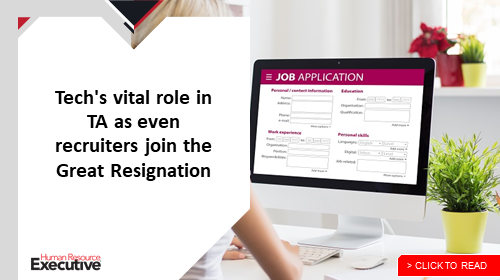Employees are switching jobs at record numbers. Workforces are also shrinking. Together, these events have created an environment in which business and HR leaders are having to play catch-up. While the roar of the “war for talent” has been heard for decades and tightening talent markets have been experiencing it in bits and pieces, today’s labor market, regardless of business type or location, is now faced with more job openings than available workers. These market pressures are creating never-before-seen urgency around talent.
For now, most businesses are reacting with the one tool that they can easily access: money. While wages in general haven’t skyrocketed as much as they have in hospitality and retail, it seems like every business has a story to tell about how they’ve used money to entice key employees to stay and to lure employees to their organization, such as increasing starting wages. And once you change that, there’s no going back. Unfortunately, the money bucket is not bottomless. It’s the definition of a finite resource, creating a reactionary cycle in the market that can only go on for so long.
Organizations shouldn’t be faulted for reacting to the urgency of open positions with money. Businesses need employees. But at some point in time, the availability of money as a solution will reach a tipping point. Leaders will need to act for the future in addition to reacting in the present. Here are three things to help drive retention in your organization.
- Ensure pay equity. Many employers hope that employees don’t tell each other how much money they make. But let’s be real: They share this information with each other, and inevitably someone is going to walk away unhappy. There is a considerable risk of turnover when one employee is earning substantially more than another employee for the same work. If you’re paying more for incoming talent, then be respectful of the talent you already have by making sure they, too, are being paid in a way that is commensurate with their expertise and tenure with the company.

- Increase workplace flexibility. It’s too early to know how much of the workforce is going to settle into long-term hybrid work, but there is no doubt that hybrid at scale is here to stay. For workers not required to be onsite, allowing work-from-anywhere is the go-to for increased workplace flexibility. Increasing flexibility for workers whose work requires them to be on-site gets a bit trickier and often requires mindset as well as policy shifts. Some unusual approaches that organizations have tried include reducing vacation and benefits vesting periods, integrating work conditioning into new employee orientation (so employees are better prepared for the actual work), and moving to 10 or even 12-hour shifts, resulting in more days off.
- Create a high-attention culture. Using money to temper resignations is short-term table stakes. The most powerful, most efficient and most expeditious longer-term approach to being proactive about talent is to invest in frequent attention. We humans have an insatiable need for attention. Not because we are looking to boost our egos or justify our salaries, but because we all want to be seen, heard and valued for our own unique selves and unique contributions. That natural desire for attention, combined with the ever-increasing speed of work, means that attention from our most important people at work, our managers, ideally happens at least weekly. The practice of attention doesn’t need to be complicated and over-structured. In fact, it can be as simple as a 3– to 5-minute check-in that sounds like, “What are your priorities this week and how can I help?” That’s it. Simple, light-touch attention. Data from real companies show over and over that employees who receive weekly, light-touch attention from their managers are three times more likely to be all-in at work.
 Related: 10 things Microsoft has learned about successful hybrid work
Related: 10 things Microsoft has learned about successful hybrid work
In the short-term, many organizations will continue to address talent shortages by increasing wages. At some time in the not-so-far-off future, the organizational tolerance for digging into the checkbook will wane. We don’t need to wonder what to do next. We know we also need to invest in proactive, long-term solutions that keep people from even entertaining leaving. It doesn’t have to be overly complicated. Start with embedding the practice of check-ins into your organization. Check-ins aren’t the only thing, but they are the fastest thing when it comes to creating a culture where people feel connected and less compelled to leave.
The post 3 ways to turn the Great Resignation into a Great Retention moment appeared first on HR Executive.